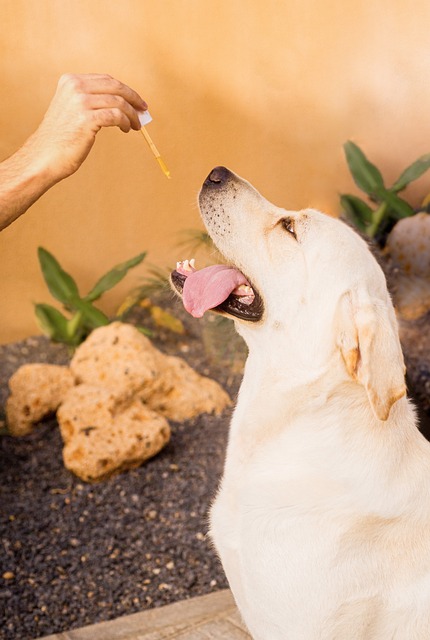High-CBD THCA hemp flowers are a non-psychoactive option in the cannabis market, praised for their therapeutic potential, including stress and anxiety relief, improved sleep, and pain management. These benefits stem from CBD's interaction with the endocannabinoid system, while THCA, a non-psychoactive precursor to THC, is also believed to contribute positively. Users may experience mild side effects like dry mouth or dizziness, which can often be managed by starting with a low dose and allowing the body time to adjust. It's crucial for individuals, especially those with existing health conditions or on medication, to consult healthcare professionals before using high-CBD THCA hemp flowers to avoid potential interactions. Responsible use in accordance with recommended dosages is key to maximizing wellness benefits and minimizing adverse effects. While federally legal under the 2018 Farm Bill, it's important to be aware of and comply with state laws regarding these products. Consumers should ensure they purchase from reputable sources to avoid health risks due to contamination or adulteration. Proper handling and storage are also necessary to maintain the quality and effectiveness of high-CBD THCA hemp flowers.
exploring the therapeutic potential of high-CBD THCA hemp flower on well-being, this article delves into its reported effects and safety considerations. While high-CBD THCA hemp flower is lauded for its beneficial properties, it’s crucial to understand its side effects. We examine the empirical evidence and user experiences to provide a comprehensive overview of how this unique hemp derivative can affect one’s health, ensuring an informed approach to its use.
- Exploring the Effects of High-CBD THCA Hemp Flower on Well-being and Potential Side Effects
- Understanding the Impact of High-CBD THCA Hemp Flower Consumption: A Look at Reported Side Effects and Safety Considerations
Exploring the Effects of High-CBD THCA Hemp Flower on Well-being and Potential Side Effects

High-C CBD THCA hemp flowers have garnered attention for their potential therapeutic properties, offering a non-psychoactive alternative to traditional cannabis products. The presence of Cannabidiol (CBD) in these flowers is particularly significant as it may interact with the body’s endocannabinoid system, influencing various physiological processes. Users often report an array of well-being benefits associated with high-CBD THCA hemp flower, which can range from stress and anxiety relief to improved sleep patterns and pain management. While these benefits are widely documented, it is crucial to approach their use with a understanding of potential side effects. Although THCA, the non-psychoactive precursor to THC, is generally considered safe, some individuals may experience mild side effects such as dry mouth or slight dizziness, particularly when first introducing high-CBD THCA hemp flower into their wellness routine. These effects are typically minor and temporary, dissipating as the body adjusts to the compounds. Nonetheless, it is advisable for users to start with a low dose to gauge their response and consult with a healthcare professional if they have any concerns or pre-existing conditions that may be affected by cannabinoids. Engaging in responsible use and adhering to recommended dosages can help mitigate the risk of side effects and ensure a safe experience with high-CBD THCA hemp flower.
Understanding the Impact of High-CBD THCA Hemp Flower Consumption: A Look at Reported Side Effects and Safety Considerations

High-CBD THCA hemp flower, which contains significant levels of Cannabidiol (CBD) and Tetrahydrocannabinolic Acid (THCA), has garnered attention for its potential therapeutic benefits. Unlike its psychoactive counterpart, Delta-9-THC, THCA is non-psychoactive and is often highlighted for its potential anti-inflammatory, analgesic, and anxiety-reducing properties. Users interested in the wellness aspects of hemp without the psychoactive effects typically turn to high-CBD strains. However, as with any substance, it’s prudent to understand the reported side effects and safety considerations associated with its consumption.
While high-CBD THCA hemp flower is generally considered safe, some individuals may experience mild side effects. These can include dry mouth, drowsiness, or a temporary drop in blood pressure upon standing. Users with pre-existing conditions, such as those on antihypertensive medications, should exercise caution and consult healthcare professionals before use. Additionally, although rare, there have been reports of allergic reactions to hemp flower, which is why patch testing or starting with a low dosage is recommended for new users. It’s also important to note that while high-CBD THCA hemp flower is federally legal in the United States under the 2018 Farm Bill, state laws vary, and it’s crucial to ensure compliance with local regulations before purchase or use. Safety considerations also extend to proper sourcing and storage of the product to maintain its quality and efficacy. Users should prioritize purchasing from reputable suppliers to avoid any contaminants or adulterated products that could pose health risks.
In conclusion, the exploration of high-CBD THCA hemp flower’s effects on well-being reveals a promising therapeutic potential alongside a range of reported side effects. Users should approach its consumption with cautious consideration, particularly regarding individual sensitivity and interaction with medications. Safety measures are paramount when integrating this cannabinoid-rich plant into one’s regimen. It is advisable for individuals to consult healthcare professionals before starting any new supplement or treatment, including high-CBD THCA hemp flower, to ensure a safe and effective experience. As research continues to evolve in this emerging field, staying informed about the latest findings is crucial for making well-considered decisions regarding its use.
